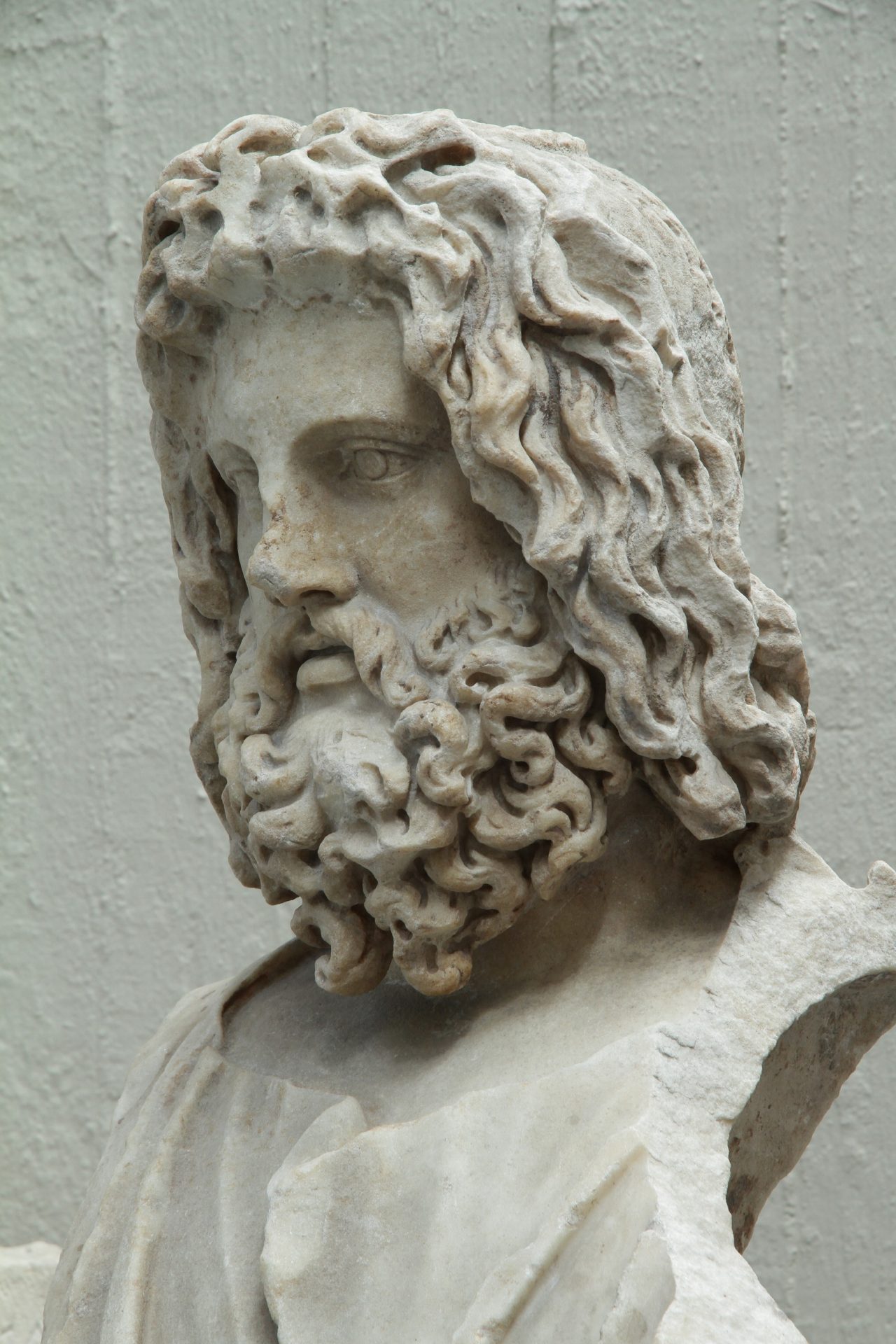Marble bust of Sarapis

About the artwork:
This marble sculpture depicts a bearded god with curly hair, wearing a cloak and whose head was once topped with a grain basket called ‘calathos’. These elements identify Sarapis, a “new” god who appeared in Egypt during the Ptolemaic period. The latter would hardly be anything other than the Hellenised version of Osiris-Apis, one of the main gods of Memphis, the ancient capital of the pharaohs. It was in Alexandria, under the first Ptolemies, in the 3rd century BC, that his image was shaped. Having become the great protective god of the Lagid capital, Sarapis became part of a recomposed divine family in which he was associated with Isis, his wife, both accompanied by their son Harpocrates, thus forming a protective triad for the Ptolemaic royal couple.
The cult of these deities of Egyptian origin, remodelled by the Greeks, enjoyed a dazzling success outside Egypt from the Ptolemaic period, thanks to the action of merchants and travellers who crossed the Mediterranean. This divine family quickly settled in Italy before spreading throughout the Roman Empire. This phenomenon was accompanied by the widespread use of images of Sarapis, which appeared on countless objects: from stone statues to metal figurines, coins and oil lamps. The Mariemont marble bust, dated to the 2nd century AD, was found during the dredging of the Tiber in Rome at the end of the 19th century, before joining the collection of Leopold Goldschmidt in Paris in 1891. The work was then acquired by Raoul Warocqué in 1904 to join his collections at the Domaine de Mariemont. The bust was originally intended to decorate the home of a wealthy inhabitant of Rome. The work shows traces of polychromy, invisible to the naked eye, which have been identified by recent archaeometric analyses. These traces alternate between yellow, orange, ochre and brown. Their distribution confirms that the bust was entirely painted.





